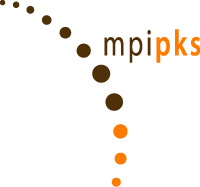
QED Laser Plasmas
Workshop Report
The workshop QED Laser Plasmas (QLASP22) was originally planned to be held in September 2020 but then postponed until September 2022, due to the outbreak of the COVID-19 pandemic. The aim of the workshop was to bring together the two laser-plasma and strong-field QED communities, to explore the rapidly growing new field of nonlinear relativistic multi-particle quantum dynamics. The workshop was initially conceived mainly by Dr. Felix Mackenroth, who then left the research after the workshop proposal was accepted. We remaining three coordinators decided to keep the list of invited speakers as well as the concept of the workshop as much unchanged as possible as those agreed together with Dr. Mackenroth.
Forty two persons participated in the workshop (including the three coordinators) from mostly Europe (Germany, Poland, Portugal, France, Romania etc.) but also from South Korea and the US. The workshop included 37 talks, 20 of which were invited. Also, 32 talks were held in person and 5 held virtually, with one cancellation.
The workshop was characterized by clear and exciting talks as well as by very lively Q&A sessions, with discussion often continuing during the coffee breaks and the lunch/dinner breaks. Several interesting topics were discussed like the influence of nonlinear relativistic quantum dynamics onto ultra-intense laser-plasma interactions, how multi-particle plasma effects affect nonlinear relativistic quantum dynamics, and which experimental tests can explore relativistic quantum plasmas.
A distinctive feature of the workshop, as compared to previous similar events, was the relatively numerous experimental talks on planned and/on already performed experiments in strong-field QED. In this respect, world-leading experts representing high-power laser facilities (Prof. Matt Zepf for the CALA facility in Germany, Prof. Liangliang Ji for the SEL facility in China, Dr. Mohammad Mirzaie for the CoReLS facility in South Korea, and Dr. Petru Ghenuche for the ELI-Beamlines facility in Romania) presented exciting prospects and sometimes also preliminary results on experiments involving laser intensities beyond 1020 W/cm2. This has clearly shown that soon dedicated experimental campaigns in strong-field QED will be realized world-wide (the recent exciting progresses made by the E320 collaboration and the corresponding experiment at SLAC in California (US) was reported by Dr. Elias Gerstmayr).
From the theory side, world-recognized experts like Prof. Alexey Arefiev, Prof. Sergei Bulanov, Prof. Christoph Keitel, and Prof. Tito Mendonca, together with younger and already renowned scientists like Dr. Stepan Bulanov, Dr. Nina Elkina, Dr. Arkadi Gonoskov, Dr. Mickael Grech, Dr. Felix Karbstein, Prof. Katarzyna Krajewska, Dr. Daniel Seipt, Dr. Matteo Tamburini, and Dr. Marija Vranic presented new developments on a broad class of phenomena including spin effects, collective effects, pathways to reach higher-and-higher intensities towards the Schwinger limit, strategies to observe electron-positron pair production, as well as sophisticated numerical techniques and methods to model upcoming experiments in strong-field QED.
During the Q&A sessions it has clearly emerged that different groups will probably start scientific collaborations and links between experimental and theory groups were initiated. Thus, we are convinced that the workshop was a successful event and represented the first meeting in our field, where it clearly emerged that experiments in strong-field QED will be pursued world-wide by several groups. Another important result, in our opinion, was the evidence that theoretical groups are making both continuous efforts to improve analytical and numerical methods to prepare the analysis of upcoming experimental results and exploring new regimes and effects to be ultimately also verified experimentally. All in all, the lively atmosphere of workshop and the extensive constructive discussions reflected the present excitement of the strong-field experimental and theoretical communities, and significantly contributed to build bridges between them, which will certainly push forward the development of our field.
Antonino Di Piazza, Stuart Mangles, Mattias Marklund
October 3, 2022
